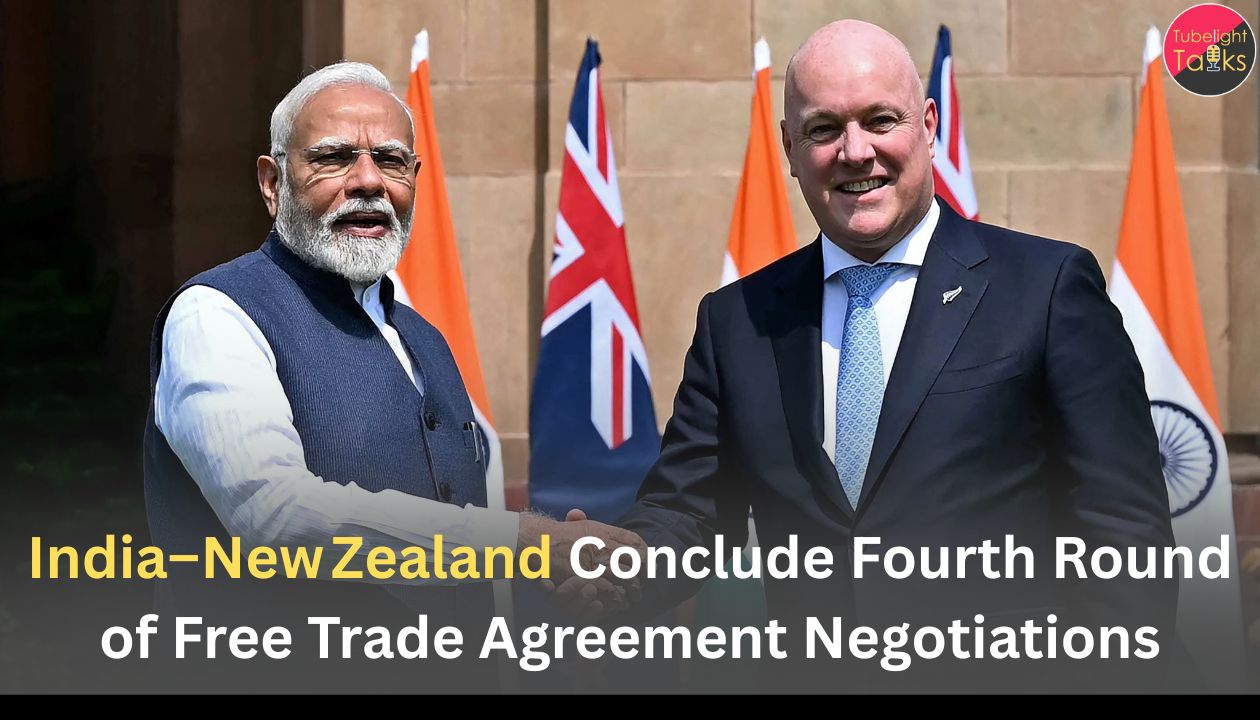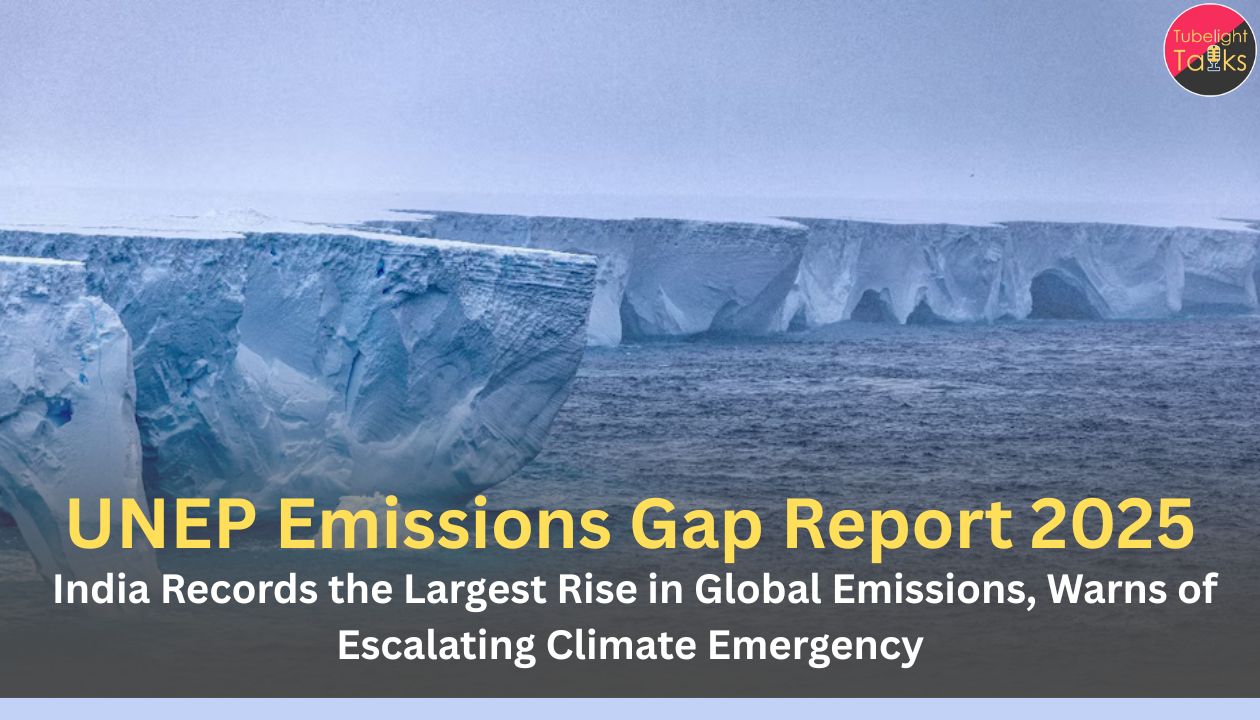4th Round of Free Trade Agreement: After five days of intensive negotiations, the governments of India and New Zealand concluded the fourth round of talks on their proposed Free Trade Agreement (FTA) in Auckland and Rotorua on 7–8 November 2025. The two sides reaffirmed their commitment to a “modern, comprehensive and future‑ready” trade pact, aiming for a balanced deal that boosts trade, investment and supply‑chain resilience.
What Was Discussed
Key Tracks of Negotiation
According to the Ministry of Commerce & Industry, both delegations focused on multiple chapters including:
- Trade in goods (market access, tariffs)
- Trade in services
- Rules of origin (criteria for product qualification under the FTA)
- Economic and trade cooperation, investment flows
Specific Highlights
- Bilateral merchandise trade stood at US $1.3 billion in the financial year 2024–25, a year‑on‑year growth of nearly 49 %.
- Both nations expressed desire to unlock potential in sectors such as agriculture, food‑processing, renewable energy, pharmaceuticals, education and services.
- India emphasised protecting sensitive sectors like dairy and MSMEs, even while advancing the pact.
Significance of this Round
Strategic Implications
- The negotiations reflect India’s effort to strengthen economic ties in the Asia‑Pacific and diversify trade partners.
- For New Zealand, the pact offers access to one of the world’s fastest‑growing markets, and underlines its interest in the South‑Asian trade landscape.
Economic & Business Impact
- A successful FTA could reduce tariffs and non‑tariff barriers, increase Indian exports to New Zealand (and vice‑versa), streamline investment and supply‑chain linkages.
- Businesses in both countries can gain greater market predictability, reduced cost of trade, and enhanced cooperation in services and technology.
Challenges & Outlook
What Remains to be Resolved
- While progress was made, detailed agreements on tariffs, quotas, sensitive sectors (especially agriculture/dairy) and rules of origin still need finalisation.
- Political sensitivities in both countries—particularly India’s dairy sector and New Zealand’s agricultural exports—require careful negotiation to maintain balance.
- Ensuring that the deal is inclusive, supports MSMEs, and does not disadvantage domestic industries remains critical.

Next Steps
- Both sides have agreed to sustain momentum through inter‑sessional technical work and further rounds of negotiations.
- Aiming for early convergence on the agreement, with a view to conclude within a reasonable timeframe.
Trade Must Serve Humanity, Not Just Profit
According to the teachings of Sant Rampal Ji Maharaj, economic activity—such as international trade—must be rooted in ethical conduct, fairness and service. He emphasises that partnerships between nations must not only aim for profit but also uplift communities, protect livelihoods and honour the welfare of all stakeholders.
“When trade is done in honesty, justice and with the consciousness of the Divine, it becomes a means of harmony rather than conflict.”
— Sant Rampal Ji Maharaj
In the context of the India‑New Zealand FTA, this implies that while India and New Zealand negotiate tariffs and access, the outcome should also support small businesses, farmers, workers and sustainable development—reflecting the higher ideal of shared prosperity.
🔗 Learn more at JagatGuruRampalJi.org
Call to Action
For Policymakers & Businesses
- Ensure sector‑specific concerns (like dairy, MSMEs, agriculture) are addressed fairly in the final accord.
- Support MSMEs, smaller exporters and service providers to benefit from the FTA—not only large enterprises.
- Develop implementation frameworks that prioritise sustainability, employment, value‑addition and supply‑chain resilience.
For Citizens & Entrepreneurs
- Explore opportunities offered by the expanded access—whether in exports, services, technology or education.
- Stay informed about changes in regulations, import‑export guidelines, tariff adjustments and investment flows.
Read Also: India’s Trade Position Reinforced: Goyal on Strategic Autonomy
FAQs: FTA Negotiations India – New Zealand
Q1. When and where did the fourth round conclude?
The fourth round of FTA negotiations concluded on 7–8 November 2025 in Auckland and Rotorua, New Zealand.
Q2. What is the current bilateral merchandise trade?
India and New Zealand achieved bilateral merchandise trade of approximately US $1.3 billion in the financial year 2024–25, with a growth rate of about 49%.
Q3. Which sectors are expected to benefit from the FTA?
Sectors include agriculture, food‑processing, renewable energy, pharmaceuticals, education and services.
Q4. What are the sensitive areas for negotiation?
India’s dairy and MSME sectors, rules of origin criteria, agricultural market access and tariff liberalisation are among the sensitive areas.
Q5. What is the next step for the FTA?
Both sides have agreed to continue detailed discussions and technical work between sessions, aiming for early convergence on the deal.










